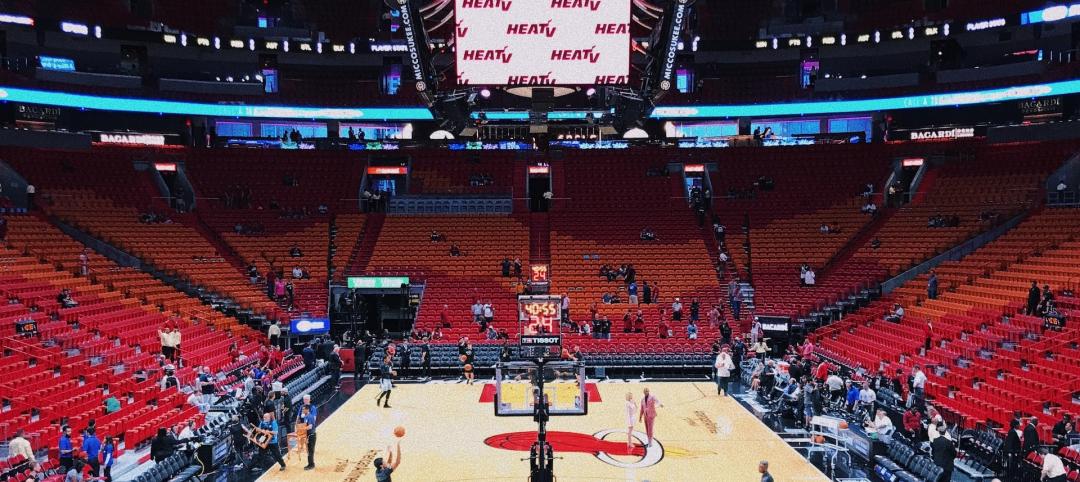Although global hotel deal volume is projected to remain in line with the most recent three-year average in 2013, Jones Lang LaSalle’s Hotels & Hospitality Group believes that signs point to an on-going uptick in Americas hotel transactions activity sooner rather than later. Jones Lang LaSalle revealed five forces which will drive the hotel investment market during the next five years at the Americas Lodging Investment Summit (ALIS) recently at the J.W. Marriott L.A. LIVE.
“There will be a significant amount of property coming to market in 2013 from a combination of the de-leveraging occurring as $55 billion of CMBS matures in the next few years and we’ll see investors who bought earlier in the cycle want their capital gains and they’ll sell,” said Arthur Adler, Americas CEO of Jones Lang LaSalle’s Hotels & Hospitality Group. “You can’t underestimate the composition of hotel ownership over a long period of time as many hotels today are in the hands of traders versus holders.”
Investors should watch the following five key forces and their impact on the hotel market:
1. Boom or bust?: Global deal volume is projected to reach as high as $33 billion this year, in line with the most recent three-year average, and could rise to $50 billion to $70 billion in the medium term. Foreign investors, primarily groups from Asia and the Middle East, have already put $3.2 billion in off-shore capital into hotels in the United States since 2010 and aren’t expected to slow down in the coming years.
2. Hotel transaction level drivers: The United States will account for half the global deal activity as fundamentals remain strong. Improving industry fundamentals, the availability and cost of capital, REIT stock prices, the amount of product on the market and the composition of hotel ownership all have a significant impact on transactions volume and will continue to drive growth.
3. Cash is king, but debt is on its way back: The formidable return of the CMBS market last year improved pricing and terms for borrowers, while drawing other lenders into the hospitality arena. Debt availability should reach a six-year high as domestic and offshore banks, insurance companies, debt funds and mortgage REITs will augment the increased CMBS lending.
4. Increasing the value of a hotel: As top-line revenue rebounds, owners will fight to avoid profit erosion and maintain asset value through increased emphasis on more dynamic and efficient revenue management and analytical tools. Increasing competition for traveler loyalty and third-party travel agents will challenge operators and come at a cost. Hotels will need to invest more in digital marketing efforts and leverage the use of online travel agencies as part of a diversified distribution channel strategy.
5. Let the games begin in Latin America: Economies in Latin America are expected to grow by four percent annually through 2020 and the region’s share of global GDP is slated to increase by 25 percent from 2000 to 2020. Economic reforms, growth in income per capita stemming from increased economic decentralization in several key markets and events such as the 2014 FIFA Soccer World Cup and Summer Olympic Games in Brazil will make the region attractive for growth in the lodging sector. Brazil, Mexico, Colombia, Peru and Chile will be at the forefront of the increase.
As operating fundamentals remain strong, hotels should remain a favored asset class globally among lenders, institutional and offshore investors. With debt simultaneously becoming more available and competitively priced, asset values and transaction volume should continue to rise.
About Jones Lang LaSalle's Hotels & Hospitality Group
Jones Lang LaSalle’s Hotels & Hospitality Group serves as the hospitality industry’s global leader in real estate services for luxury, upscale, select service and budget hotels; timeshare and fractional ownership properties; convention centers; mixed-use developments and other hospitality properties. The firm’s more than 265 dedicated hotel and hospitality experts partner with investors and owner/operators around the globe to support and shape investment strategies that deliver maximum value throughout the entire lifecycle of an asset. In the last five years, the team completed more transactions than any other hotels and hospitality real estate advisor in the world totaling nearly US$25 billion, while also completing approximately 4,000 advisory and valuation assignments. The group’s hotels and hospitality specialists provide independent and expert advice to clients, backed by industry-leading research.
For more news, videos and research from Jones Lang LaSalle’s Hotels & Hospitality Group, please visit: www.jll.com/hospitality or download the Hotels & Hospitality Group’s app from the App Store.
About Jones Lang LaSalle
Jones Lang LaSalle (NYSE:JLL) is a professional services and investment management firm offering specialized real estate services to clients seeking increased value by owning, occupying and investing in real estate. With annual revenue of $3.9 billion, Jones Lang LaSalle operates in 70 countries from more than 1,000 locations worldwide. On behalf of its clients, the firm provides management and real estate outsourcing services to a property portfolio of 2.6 billion square feet. Its investment management business, LaSalle Investment Management, has $47.0 billion of real estate assets under management. For further information, visit www.jll.com.
Related Stories
University Buildings | Nov 13, 2022
University of Washington opens mass timber business school building
Founders Hall at the University of Washington Foster School of Business, the first mass timber building at Seattle campus of Univ. of Washington, was recently completed. The 84,800-sf building creates a new hub for community, entrepreneurship, and innovation, according the project’s design architect LMN Architects.
Giants 400 | Nov 8, 2022
Top 110 Sports Facility Architecture and AE Firms for 2022
Populous, HOK, Gensler, and Perkins and Will top the ranking of the nation's largest sports facility architecture and architecture/engineering (AE) firms for 2022, as reported in Building Design+Construction's 2022 Giants 400 Report.
Giants 400 | Nov 8, 2022
Top 60 Sports Facility Contractors and CM Firms for 2022
AECOM, Mortenson, Clark Group, and Turner Construction top the ranking of the nation's largest sports facility contractors and construction management (CM) firms for 2022, as reported in Building Design+Construction's 2022 Giants 400 Report.
Industry Research | Nov 8, 2022
U.S. metros take the lead in decarbonizing their built environments
A new JLL report evaluates the goals and actions of 18 cities.
Hotel Facilities | Nov 8, 2022
6 hotel design trends for 2022-2023
Personalization of the hotel guest experience shapes new construction and renovation, say architects and construction experts in this sector.
Resiliency | Nov 8, 2022
Oregon wildfire risk law prompts extensive backlash from property owners
A bipartisan bill aimed at protecting property owners from wildfires that was passed by the Oregon legislature has prompted a strong backlash.
Reconstruction & Renovation | Nov 8, 2022
Renovation work outpaces new construction for first time in two decades
Renovations of older buildings in U.S. cities recently hit a record high as reflected in architecture firm billings, according to the American Institute of Architects (AIA).
Sponsored | Steel Buildings | Nov 7, 2022
Steel structures offer faster path to climate benefits
Faster delivery of buildings isn’t always associated with sustainability benefits or long-term value, but things are changing. An instructive case is in the development of steel structures that not only allow speedier erection times, but also can reduce embodied carbon and create durable, highly resilient building approaches.
Building Team | Nov 7, 2022
U.S. commercial buildings decreased energy use intensity from 2012 to 2018
The recently released 2018 Commercial Buildings Energy Consumption Survey (CBECS) by the U.S. Energy Information Administration found that the total floorspace in commercial buildings has increased but energy consumption has not, compared with the last survey analyzing the landscape in 2012.
| Nov 7, 2022
Mixed-use tower in China features world’s highest outdoor pool
Guangxi China Resources Tower, a new 403-meter-tall (1,322 feet) skyscraper in Nanning, China features the world’s highest outdoor pool—at 323 meters (1,060 feet) above grade.

















